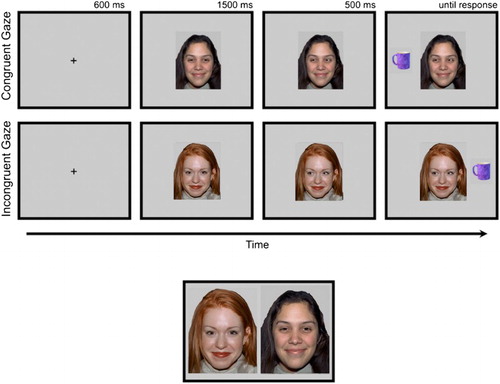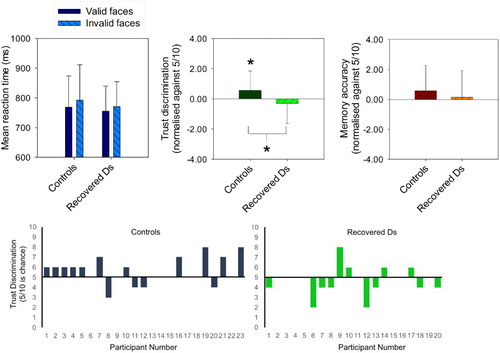Figures & data
Figure 1. Top panel: trial structure for the gaze cueing task. Valid faces were followed by objects presented on the same side as the shifted gaze; invalid faces were followed by objects on the opposite side. Lower panel: Illustrative example of how face pairs were presented for the trustworthy and memory judgements. Development of the MacBrain Face Stimulus Set was overseen by Nim Tottenham and supported by the John D. and Catherine T. MacArthur Foundation Research Network on Early Experience and Brain Development. Please contact Nim Tottenham at [email protected] for more information concerning the stimulus set.

Figure 2. Top panel shows mean correct reaction time (ms ± SD) for target categorisations following valid and invalid faces in the gaze cueing task, and mean number of valid faces chosen as trustworthy and most frequently presented in 20 recovered-depressed adults and 23 age- and ability-matched never-depressed controls. The y-axes for the forced-choice trust and memory discriminations are normalised to chance (5/10 correct). *p < .05 from pair-wise and one-sample t-tests. Bottom panel shows individual participant data for the critical trustworthiness judgement task (i.e. individual data points that contributed to the central graph of the upper panel of this figure). Chance level performance is where a participant selects five valid cue faces and five invalid cue faces as trustworthy, hence bars above the line indicate that the participant had a bias to select more “valid” gaze cue than “invalid” gaze cue faces.

